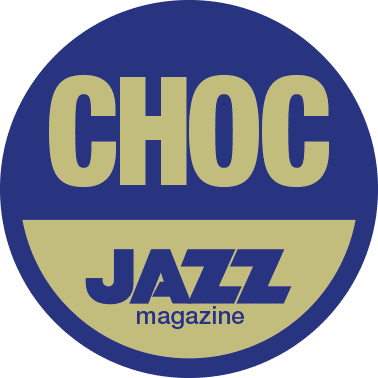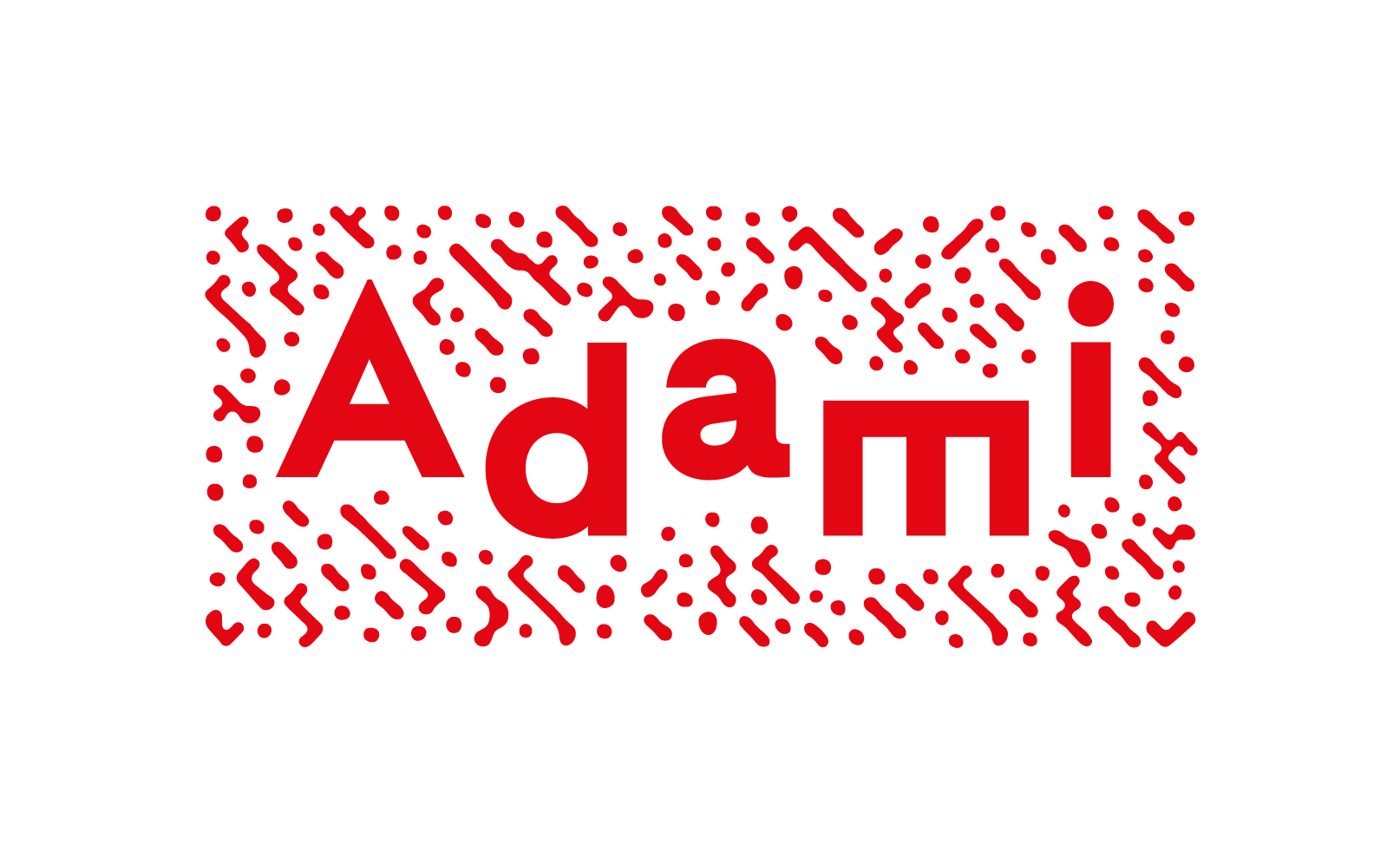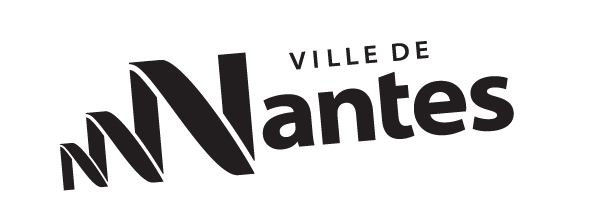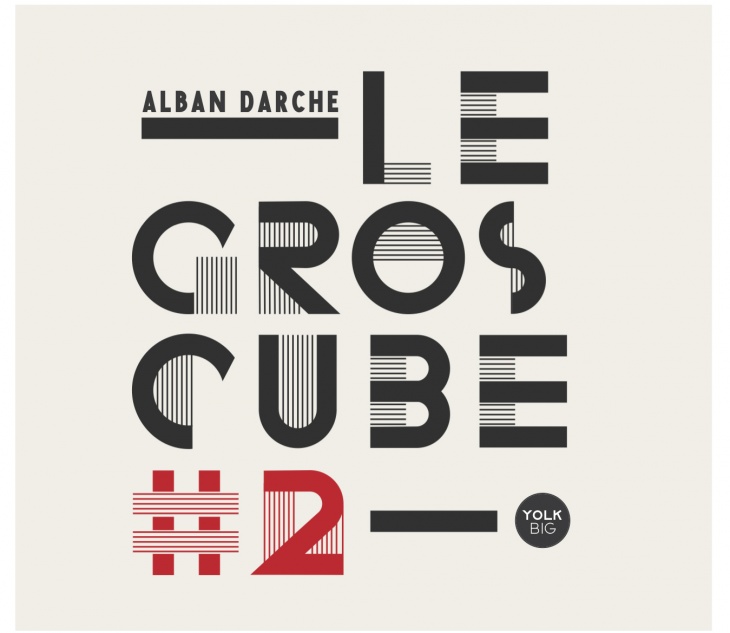





reference number : J2080
release date : 05/03/2021
release date : 05/03/2021
Photos : © Thierry Mallevaes
Video
Alban Darche & Le Gros Cube #2
about this album
Amongst all the machine-linked metaphors used in the history of large groups in jazz, that of Alban Darche’s Gros Cube (literally “Big Bike”) is unusual, but absolutely perfect for describing this brand new band. It can purr, snore, or roar in turn; it can even gleam and sparkle, but it never goes over the top. The impression it leaves is less one of a Formula 1 engine than that of a gleeful ballet of bikers out for a good time, swept along in a masterly choreography. Alban Darche succeeds in inventing the most improbable combinations of instruments out of the strictly classical instrumentation of the typical Big Band; he’s constantly putting sections together then dismounting them, as if it were all a musical meccano and he’s a child “screwing” the new sounds together with his particularly gifted hands.
Each of the 17 members of the band – all soloists – seems galvanised into action by a strong sense of liberty, thanks to the roaring breakaways the coherent and spectacular orchestration allows them. As for the collective harmonised parts, they all show an outstanding “vocal” quality that is virtually unknown in current instrumental jazz.
Gérard ARNAUD
INTERVIEW Alban Darche / Thierry Mallevaës, 2020
Le Gros Cube, number 2 ?
Number two, because there was a number one. In the wake of Le Cube trio, in the early 2000s, I gathered a large ensemble, Le Gros Cube (14 piece band). The first album La Martipontine was released in 2005, followed by Polar Mood, Le Pax, with Philippe Katerine and Queen Bishop with a greater Gros Cube (piano, second drum set and three singers). It lasted about ten years.
Since 2012, I 've pursued with reduced ensembles as L'Orphicube (9 musicians). With this lighter orchestra, I was able to explore the field of chamber music.
Why do you consider this a rebirth ?
With big bands, the special things emerge with the audience. That experience is something that I always cherish. I also wanted to work with a traditional instrumentation.
Traditional ?
On the first Gros Cube , I had a specific instrumentation, with incomplete sections. For Le Gros Cube #2, I chose an American-style big band: five saxs, four trumpets, three trombones, a tuba, and a rhythmic piano, guitar, double bass and drums.
American-style?
I wanted to play with this tradition. The big band is like a string quartet in classical music: an ideal setup for bringing music to life. This traditionnal ensemble is common to this day because it works best, it's got a great balance. To stay with this tradition, I also decided to record it “live”, everyone in the same room.
And the music itself, American-influenced ?
I try to give my own twist for sure, keeping this historical background in mind, with a rooting in the big band sound. In the orchestra, I wanted a few American musicians to share their knowledge and practice: Jon Irabagon and Loren Stillman (saxes), John Fedchock (tbn lead). They've always been doing it forever, that's how they learned music. And many of them play and have played in the greatest big bands in the world, Woody Herman, Maria Schneider, the Liberation Music Orchestra, the Vanguard Jazz Orchestra.
Can you tell us more about the musicians ?
Two Swiss with whom I have already carried out several projects: Samuel Blaser (tb) and Marie Krüttli (p), and other familiar faces like the belgian Jean-Paul Estiévenart (tpt). There are also new collaborators like Joël Chausse on the lead trumpet. The other musicians are all long time companions: Sébastien Boisseau (db), Christophe Lavergne (dr), Matthieu Donarier (sax, clar), Jean-Louis Pommier (tbn), Geoffroy Tamisier and Olivier Laisney (tpts), all soloists.
Among all these soloists, where did Alban Darche the saxophonist stand ?
Exactly, it was not easy. There's no need to invite musicians of this caliber, to write for them and not to let them play, taking all the solos myself. I opted for the tenor. I'm not the only tenor but it allows me to express myself the best. This stand in the middle of the sax section is central and remains a good place to direct. Entrusting the lead alto to Americans immediately gives the right balance to the sound of the orchestra.
So what is to expect from Le Gros Cube #2 ?
It is a collection of unpublished pieces and re-orchestrated pieces. With Le Gros Cube #2, I know that I have a fully functional orchestra at my disposal, the set up will make the audience feel at home, giving more space to include more demanding pieces.
That's what interests me: coming from common ground to bring more sophisticated ideas. Offering very personal echo in a familiar landscape, or building a complex landscape with obvious tones.
Each of the 17 members of the band – all soloists – seems galvanised into action by a strong sense of liberty, thanks to the roaring breakaways the coherent and spectacular orchestration allows them. As for the collective harmonised parts, they all show an outstanding “vocal” quality that is virtually unknown in current instrumental jazz.
Gérard ARNAUD
INTERVIEW Alban Darche / Thierry Mallevaës, 2020
Le Gros Cube, number 2 ?
Number two, because there was a number one. In the wake of Le Cube trio, in the early 2000s, I gathered a large ensemble, Le Gros Cube (14 piece band). The first album La Martipontine was released in 2005, followed by Polar Mood, Le Pax, with Philippe Katerine and Queen Bishop with a greater Gros Cube (piano, second drum set and three singers). It lasted about ten years.
Since 2012, I 've pursued with reduced ensembles as L'Orphicube (9 musicians). With this lighter orchestra, I was able to explore the field of chamber music.
Why do you consider this a rebirth ?
With big bands, the special things emerge with the audience. That experience is something that I always cherish. I also wanted to work with a traditional instrumentation.
Traditional ?
On the first Gros Cube , I had a specific instrumentation, with incomplete sections. For Le Gros Cube #2, I chose an American-style big band: five saxs, four trumpets, three trombones, a tuba, and a rhythmic piano, guitar, double bass and drums.
American-style?
I wanted to play with this tradition. The big band is like a string quartet in classical music: an ideal setup for bringing music to life. This traditionnal ensemble is common to this day because it works best, it's got a great balance. To stay with this tradition, I also decided to record it “live”, everyone in the same room.
And the music itself, American-influenced ?
I try to give my own twist for sure, keeping this historical background in mind, with a rooting in the big band sound. In the orchestra, I wanted a few American musicians to share their knowledge and practice: Jon Irabagon and Loren Stillman (saxes), John Fedchock (tbn lead). They've always been doing it forever, that's how they learned music. And many of them play and have played in the greatest big bands in the world, Woody Herman, Maria Schneider, the Liberation Music Orchestra, the Vanguard Jazz Orchestra.
Can you tell us more about the musicians ?
Two Swiss with whom I have already carried out several projects: Samuel Blaser (tb) and Marie Krüttli (p), and other familiar faces like the belgian Jean-Paul Estiévenart (tpt). There are also new collaborators like Joël Chausse on the lead trumpet. The other musicians are all long time companions: Sébastien Boisseau (db), Christophe Lavergne (dr), Matthieu Donarier (sax, clar), Jean-Louis Pommier (tbn), Geoffroy Tamisier and Olivier Laisney (tpts), all soloists.
Among all these soloists, where did Alban Darche the saxophonist stand ?
Exactly, it was not easy. There's no need to invite musicians of this caliber, to write for them and not to let them play, taking all the solos myself. I opted for the tenor. I'm not the only tenor but it allows me to express myself the best. This stand in the middle of the sax section is central and remains a good place to direct. Entrusting the lead alto to Americans immediately gives the right balance to the sound of the orchestra.
So what is to expect from Le Gros Cube #2 ?
It is a collection of unpublished pieces and re-orchestrated pieces. With Le Gros Cube #2, I know that I have a fully functional orchestra at my disposal, the set up will make the audience feel at home, giving more space to include more demanding pieces.
That's what interests me: coming from common ground to bring more sophisticated ideas. Offering very personal echo in a familiar landscape, or building a complex landscape with obvious tones.
Thank you


tracklist
1. A la bougie
2. Ping-Pong
3. Le Cercle
4. Arcane XVIIII - Le Soleil
5. Le Mort Joyeux
6. Beauty and SAdness II
7. Le chemin (vertueux)
8. L'Oiseau qu'on voit chante sa plainte
9. Arcane XXII - Le Mat
10. Arcane XV - Le Diable
All compositions and arrangemnts by Alban Darche.
Recorded and mixed by Jonathan Marcoz at Peninsula Studio in January 2020, under live conditions. Mastered bu Pierre Vandewaeter at Studio Lakanal.
Sébastien Boisseau plays on D’Addario ZYEX strings
Alban Darche plays D’Addario reeds and Selmer instruments
John Fedchock plays XO Trombones exclusively
Samuel Blaser is a XO Brass Artist and appears courtesy of OutNote Records/Outhere Music
Matthieu Donarier plays D’Addario reeds and mouthpieces
Jean-Paul Estiévenart plays AR Resonance mouthpieces
Christophe Lavergne’s cymbals are modified by Johan Nicolas Janicke
2. Ping-Pong
3. Le Cercle
4. Arcane XVIIII - Le Soleil
5. Le Mort Joyeux
6. Beauty and SAdness II
7. Le chemin (vertueux)
8. L'Oiseau qu'on voit chante sa plainte
9. Arcane XXII - Le Mat
10. Arcane XV - Le Diable
All compositions and arrangemnts by Alban Darche.
Recorded and mixed by Jonathan Marcoz at Peninsula Studio in January 2020, under live conditions. Mastered bu Pierre Vandewaeter at Studio Lakanal.
Sébastien Boisseau plays on D’Addario ZYEX strings
Alban Darche plays D’Addario reeds and Selmer instruments
John Fedchock plays XO Trombones exclusively
Samuel Blaser is a XO Brass Artist and appears courtesy of OutNote Records/Outhere Music
Matthieu Donarier plays D’Addario reeds and mouthpieces
Jean-Paul Estiévenart plays AR Resonance mouthpieces
Christophe Lavergne’s cymbals are modified by Johan Nicolas Janicke
Connexions
other works with Samuel Blaser
JASS >> JASSJASS >> mix of sun and clouds
Jean-Christophe Cholet - Alban Darche - Mathias Ruëgg >> Le tombeau de Poulenc
PACIFIC >> PACIFIC
Le Gros Cube #2 >> Histoire sans paroles
other works with Sébastien Boisseau
UNIT >> wavin'Le Gros Cube >> La martipontine
Le Cube >> Le Thé
Le Gros Cube >> LE PAX, Le Gros Cube VS Katerine
Le Gros Cube >> Polar mood
Le Cube >> Autorité Culinaire
Triade >> japan edition
Triade >> l'ardu
A suivre... x'tet >> paris-calvance
A suivre... x'tet >> variations alterees
Hazebrouck sextet >> frasques
D. Casimir & Yolk en cuisine >> Phonotaxis ou le génome de la vache
Le Cube >> Frelon Rouge
Wood (boisseau-donarier) >> WOOD
Le Gros Cube >> Queen bishop
JASS >> JASS
Orphicube >> perception instantanée
Alban Darche hyprcub >> Crooked House
La Musique de Salon >> 1 salon, 2 musiciens
JASS >> mix of sun and clouds
Orphicube >> Atomic Flonflons
Orbit >> Orbit
Clover >> Vert Emeraude
Clover >> Paradigme
Le Gros Cube #2 >> Histoire sans paroles
David Chevallier quartet >> Curiosity
Orbit >> In-visibility
Jean-Paul Delore, Louis Sclavis, Sébastien Boisseau >> Langues et lueurs
Clover >> Magellan
David Chevallier trio >> ReSet
other works with Joël Chausse
Le Gros Cube #2 >> Histoire sans parolesother works with Gilles Coronado
Le Cube >> Le ThéLe Gros Cube >> LE PAX, Le Gros Cube VS Katerine
Le Gros Cube >> Polar mood
Francis et ses peintres >> la paloma
Print & friends >> around k
Le Gros Cube >> Queen bishop
Le Gros Cube #2 >> Histoire sans paroles
other works with Alban Darche
Le Cube >> Le ThéLe Gros Cube >> La martipontine
Le Gros Cube >> LE PAX, Le Gros Cube VS Katerine
Le Gros Cube >> Polar mood
Le Cube >> Autorité Culinaire
Quartethno >> quartethno
OLH Acoustic >> une vie sans lune
Jazzophone quartet >> blues for geo
Jazzophone cie + Tim Berne >> mosaiques
Qüntêt >> on the road enfin...
OLH Acoustic >> G. meets K.
Jazzophone >> yellow suite
Alban Darche trio >> trickster
Qüntêt >> vents dominants
Alban Darche trio >> brut ou demi sec?
D. Casimir & Yolk en cuisine >> Phonotaxis ou le génome de la vache
Quartethno >> tawada
Le Cube >> Frelon Rouge
Le Gros Cube >> Queen bishop
JASS >> JASS
Orphicube >> perception instantanée
Le Gros Cube #2 >> Histoire sans paroles
Alban Darche hyprcub >> Crooked House
Qüntêt featuring Desdamona >> Mots croisés/ Crosswords
JASS >> mix of sun and clouds
Orphicube >> Atomic Flonflons
Jean-Christophe Cholet - Alban Darche - Mathias Ruëgg >> Le tombeau de Poulenc
Clover >> Vert Emeraude
PACIFIC >> PACIFIC
Longboard >> Being wild
Clover >> Paradigme
Dandy Dandie >> Hypnos & Morphée
Alban Darche et Loïs Le Van >> Les mots bleus
Alban Darche et Loïs Le Van >> Lazy Afternoon
Clover >> Magellan
other works with Matthieu Donarier
Matthieu Donarier trio >> live formsLe Gros Cube >> La martipontine
UNIT >> wavin'
Le Gros Cube >> LE PAX, Le Gros Cube VS Katerine
Le Gros Cube >> Polar mood
Matthieu Donarier trio >> optic topic
Kindergarten >> kindergarten
D. Casimir & Yolk en cuisine >> Phonotaxis ou le génome de la vache
Wood (boisseau-donarier) >> WOOD
Le Gros Cube >> Queen bishop
Orphicube >> perception instantanée
Matthieu Donarier trio >> Papier Jungle
Jean-Christophe Cholet - Alban Darche - Mathias Ruëgg >> Le tombeau de Poulenc
Adieu mes très belles >> Adieu mes très belles
Longboard >> Being wild
Santi Quintans' TIPTRICK >> Kiss the Joy
Le Gros Cube #2 >> Histoire sans paroles
Matthieu Donarier quartet >> COASTLINE
other works with Jean-Paul Estiévenart
Le Gros Cube #2 >> Histoire sans parolesother works with John Fedchock
Le Gros Cube #2 >> Histoire sans parolesother works with Jon Irabagon
Alban Darche hyprcub >> Crooked HouseLe Gros Cube #2 >> Histoire sans paroles
other works with Marie Krüttli
Le Gros Cube #2 >> Histoire sans parolesother works with Olivier Laisney
Orphicube >> Atomic FlonflonsJean-Christophe Cholet - Alban Darche - Mathias Ruëgg >> Le tombeau de Poulenc
Le Gros Cube #2 >> Histoire sans paroles
Louis Sclavis quintet >> INDIA
other works with Christophe Lavergne
Le Gros Cube >> La martipontineLe Cube >> Le Thé
Le Gros Cube >> LE PAX, Le Gros Cube VS Katerine
Le Gros Cube >> Polar mood
Le Cube >> Autorité Culinaire
Francis et ses peintres >> la paloma
Qüntêt >> vents dominants
LPT3 >> deja 7h!?...
Le Cube >> Frelon Rouge
Le Gros Cube >> Queen bishop
Orphicube >> perception instantanée
Alban Darche hyprcub >> Crooked House
Jazzarium >> Megapolis
Qüntêt featuring Desdamona >> Mots croisés/ Crosswords
LPT3 >> Vents Divers
Orphicube >> Atomic Flonflons
Jean-Christophe Cholet - Alban Darche - Mathias Ruëgg >> Le tombeau de Poulenc
Le Gros Cube #2 >> Histoire sans paroles
David Chevallier quartet >> Curiosity
Louis Sclavis quintet >> INDIA
David Chevallier trio >> ReSet
other works with Jean-Louis Pommier
Le Gros Cube >> La martipontineLe Gros Cube >> LE PAX, Le Gros Cube VS Katerine
Le Gros Cube >> Polar mood
Qüntêt >> on the road enfin...
A suivre... x'tet >> paris-calvance
Le souffle des terroirs >>
A suivre... x'tet >> variations alterees
Qüntêt >> vents dominants
LPT3 >> deja 7h!?...
D. Casimir & Yolk en cuisine >> Phonotaxis ou le génome de la vache
A suivre... x'tet >> suite... de danses
Le Gros Cube >> Queen bishop
Brass danse orchestra >> La danse du souffle
Jazzarium >> Megapolis
Qüntêt featuring Desdamona >> Mots croisés/ Crosswords
LPT3 >> Vents Divers
Clover >> Vert Emeraude
Yves Rousseau 7tet - >> Fragments
Santi Quintans' TIPTRICK >> Kiss the Joy
Clover >> Paradigme
Le Gros Cube #2 >> Histoire sans paroles
Brass danse orchestra >> La danse du temps
Clover >> Magellan
other works with Matthias Quilbault
Jean-Christophe Cholet - Alban Darche - Mathias Ruëgg >> Le tombeau de PoulencLe Gros Cube #2 >> Histoire sans paroles
other works with Rémi Sciuto
Qüntêt featuring Desdamona >> Mots croisés/ CrosswordsLe Gros Cube #2 >> Histoire sans paroles
other works with Loren Stillman
Le Gros Cube #2 >> Histoire sans parolesother works with Geoffroy Tamisier
Le Gros Cube >> La martipontineLe Gros Cube >> LE PAX, Le Gros Cube VS Katerine
Le Gros Cube >> Polar mood
Le Cube >> Autorité Culinaire
Quartethno >> quartethno
OLH Acoustic >> une vie sans lune
Jazzophone cie + Tim Berne >> mosaiques
OLH Acoustic >> G. meets K.
Le souffle des terroirs >>
Geoffroy Tamisier trio >> au bonheur des anges
Quartethno >> tawada
Georgui Kornazov quintet >> staro vreme
Le Gros Cube >> Queen bishop
Brass danse orchestra >> La danse du souffle
Jazzarium >> Megapolis
PACIFIC >> PACIFIC
Nathalie Darche joue Geoffroy Tamisier >> 15 berceuses
Le Gros Cube #2 >> Histoire sans paroles
Dandy Dandie >> Hypnos & Morphée
Brass danse orchestra >> La danse du temps

Photos : © Thierry Mallevaes
